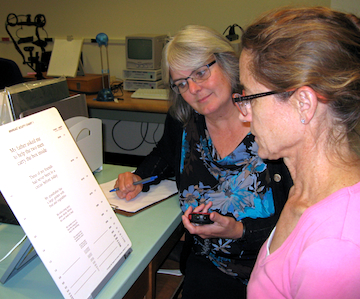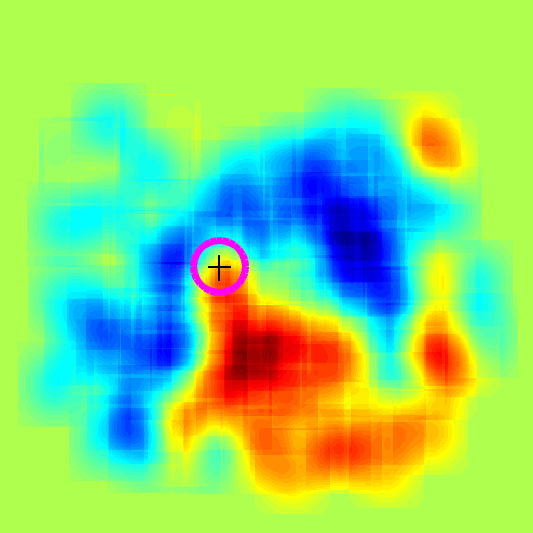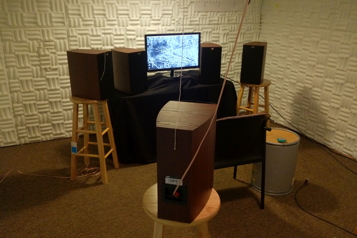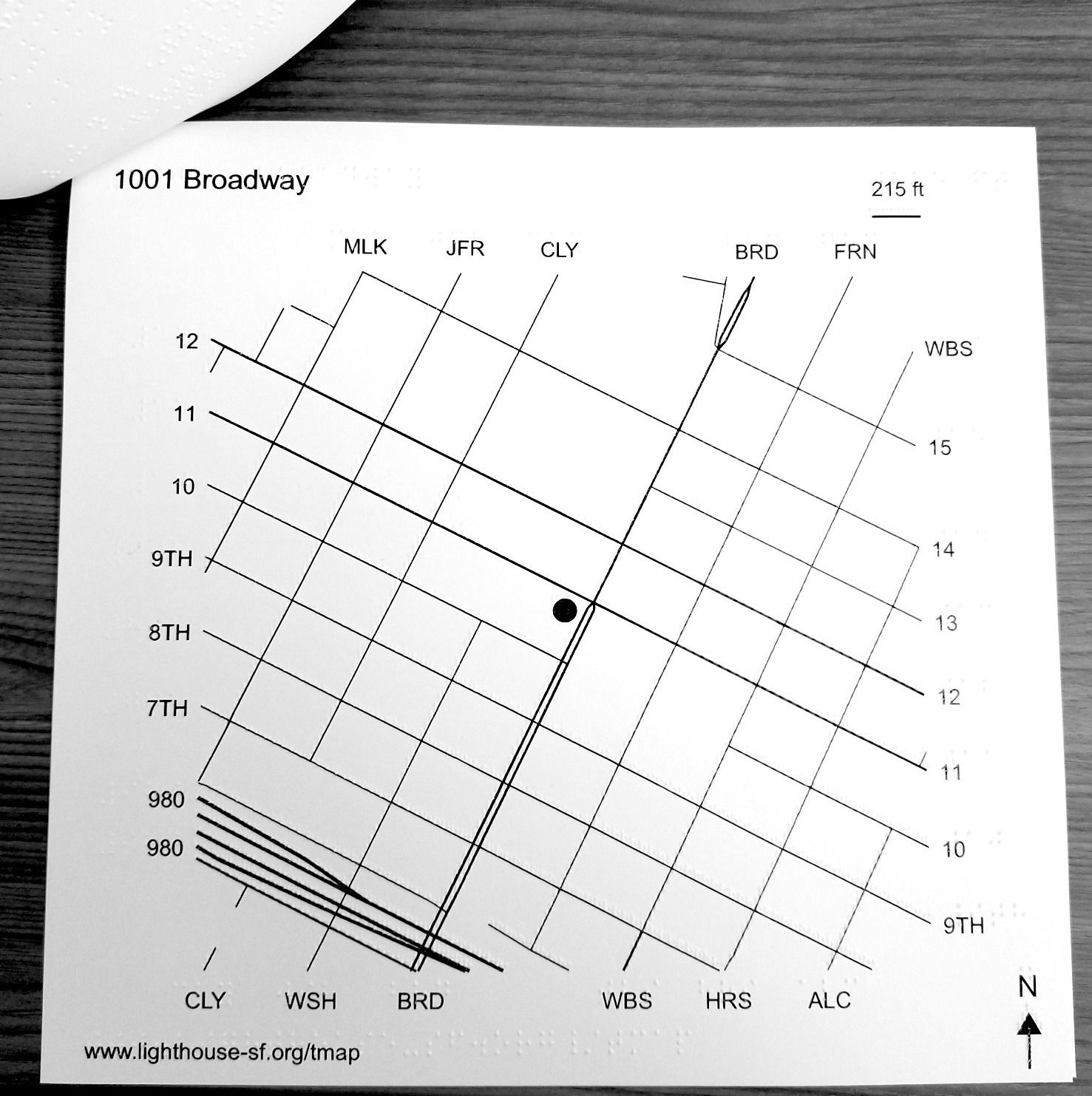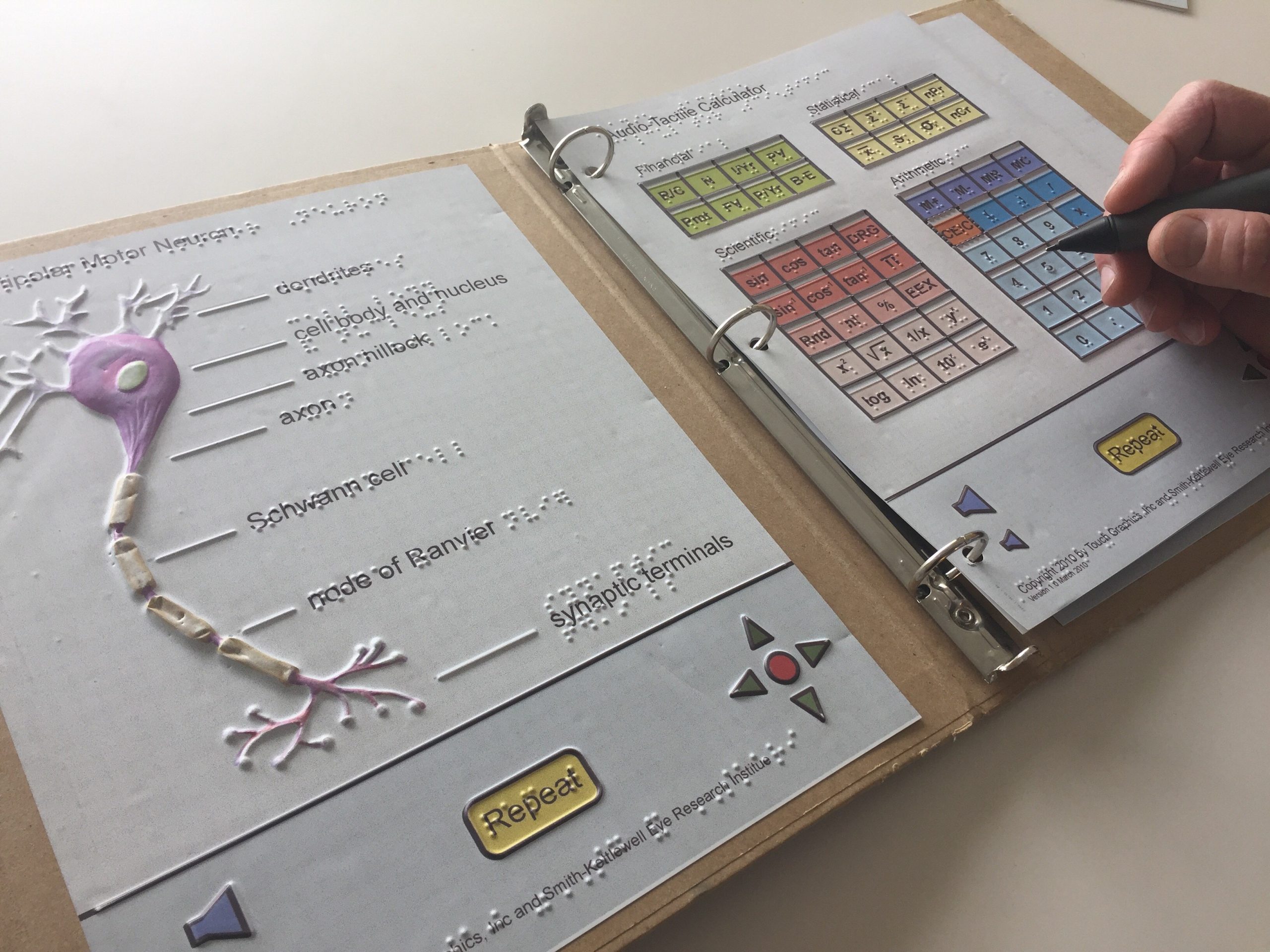Video Description Research and Development Center
The Smith-Kettlewell Video Description Research and Development Center (VDRDC) investigates innovative technologies and techniques for making online video more accessible to blind and visually-impaired students and consumers.
Reading, Vision Function and Disease Progression in Early to Intermediate AMD
Most prior research on reading in people with age-related macular degeneration (AMD) has focused on those with advanced disease. The first goal of this project is to examine the visual, motor, and cognitive factors that contribute to reading performance in people with early to intermediate(E/I) AMD. A second goal is to compare those with E/I AMD to age-matched groups with no AMD, and with advanced disease to determine which characteristics of the E/I AMD participants more closely match those with advanced AMD. The final goal is to assess our E/I AMD participants longitudinally to determine…
Characteristics of Smooth Pursuit in Individuals with Central Field Loss
This project investigates the properties of smooth pursuit eye movements in individuals with macular degeneration. Commonly believed to be a fovea-linked eye movement, smooth pursuit has not been previously investigated in individuals with central field loss, despite its importance for tracking moving objects, such as vehicles or pedestrians on a busy street.
Realistic Hearing Aid Outcomes
The primary objective of this project is to develop a set of realistic outcome measures that relate to the real-world use of hearing aids. A second objective is to evaluate the extent to which these measures are predictive of hearing aid benefit and user satisfaction after the client has worn the hearing aid for two or more months and has acclimatized to the instrument.
The Specific Aims are as follows
Aim #1: Develop and evaluate an outcome measure that takes into account the interactive nature of human communication and which is predictive of the extent to which a person with a hearing loss is…
Descriptive Video Exchange (DVX)
This innovative technology permitted wiki-style crowd-sourcing of video description in a completely new way, opening the door to amateur description provided for any video content, and distributed to anyone without modifying or redistributing the original video in any way.
YouDescribe
YouDescribe is a free, web-based platform for adding audio description to YouTube content.
Wearabraille
WearaBraille is a research project into wearable computing, and the use of MEMS sensors as novel input technology to mobile devices such as laptops, PDAs and smartphones. Our prototype device functions much like a Braille keyboard, but instead of buttons for each finger to press, there are accelerometers on the back of each finger, near the knuckles (keeping the palms and finger tips free). When a finger taps on a table top or other firm surface, the WearaBraille knows that the Braille dot associated with that finger is part of the current character. By tapping multiple fingers simultaneously…
Tactile Map Automated Production (TMAP)
Smith-Kettlewell’s Tactile Map Automated Production (TMAP) Project was initiated with the goal of developing the first web-based software tool for rapid production of highly specific, tactile street maps of any location in the USA.
Audio/Tactile Graphics Using LiveScribe Smartpen
Active from 2007 to 2010, this project was the first exploration of using a digital smartpen as a platform for creating and presenting audio/tactile graphics – a system of using touch-based audio to annotate tactile figures to improve access to graphical information for the blind. The project, a collaboration between Smith-Kettlewell and Vanderbilt University, used the Livescribe Pulse Pen – a commercial smart pen device that includes a video camera in its tip, a microprocessor that can run Java programs, memory, an audio speaker, a microphone, and a rechargeable battery. When the tip of the…
Visual-Impairment Research Agenda for Description (VIRAD)
A systematic road map charting gaps in the quantitative evidence about how description can and should be used to improve video usability for the blind.
The Smith-Kettlewell Video Description Research and Development Center is proud to be working with the WGBH NCAM
to develop the Visual-Impairment Research Agenda for Description (VIRAD). While many focus groups, advisory panels, and expert practitioners have contributed to the accumulation of anecdotal evidence to guide the creation and delivery of description, there remains a surprising dearth of evidence-based best practices in this field…
